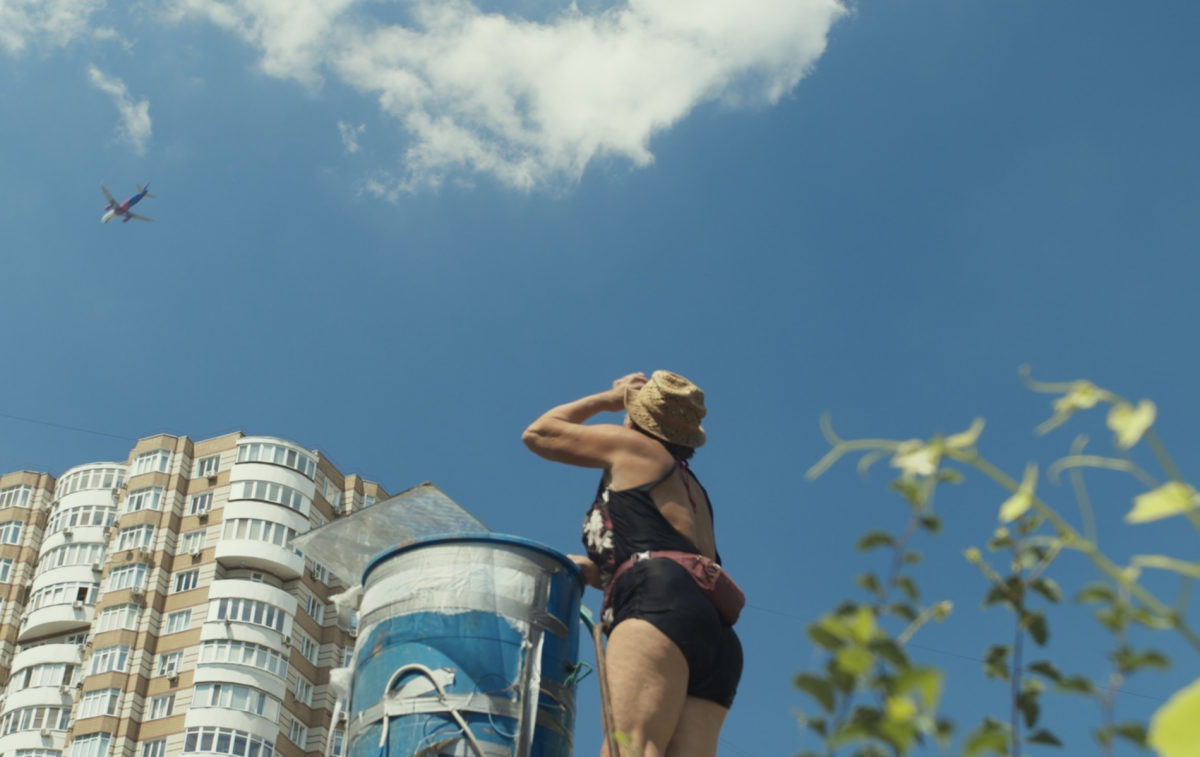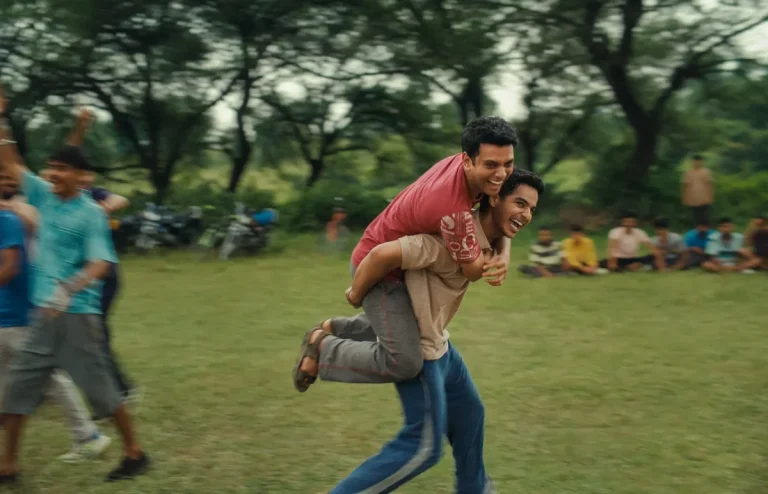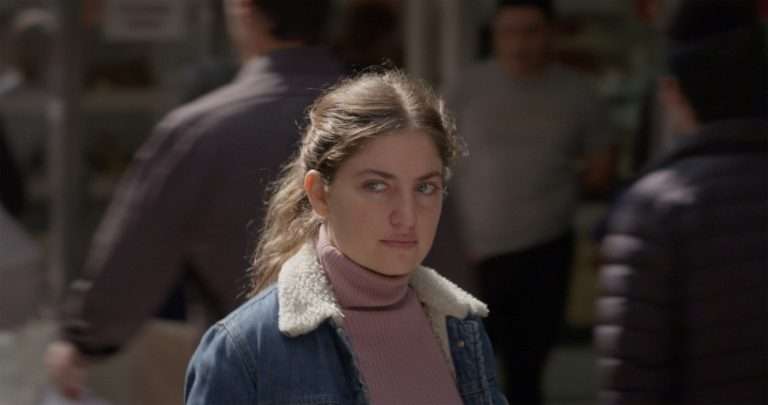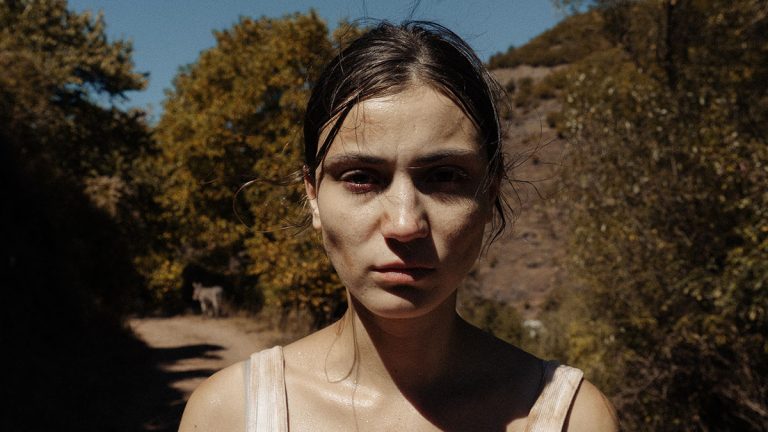It’s rare to find a documentary so rich in vision and character portrayal that it both shatters your heart and mends it with newfound hope. “Flowers of Ukraine” delves into the heart of contemporary Ukrainian society exploring the context of conflict and resilience through its protagonist, a 67-year-old Natalia, who struggles to keep her plot of land to herself, live independently, and keep building up hopes in times so dark and lonely that someone else in her position would likely have given up. Adelina Borets is a visionary filmmaker who directs the film in such a way that brings together personal narratives alongside the national turmoil while illuminating the human spirit in adversity.
Natalia lives on a lush, vibrant plot of land where she cultivates flowers, tends to her goats, chickens, and birds, nurtures her greenhouse, and grows watermelons—embracing what appears to be her best life in harmony with nature. For several years, she has been fighting against investors who wish to pay her a million UAH to build a property catering to the rich in the place of her house and land. In the documentary, we see her tirelessly fend them off, single-handedly blocking their paths and issuing warnings. Yet, it’s clear she harbors a genuine concern that her methods may eventually fail her.
“We threw ourselves under their tractors and we went to court. We resisted, just as Ukraine resists now.”
One expects the film to revolve around Natalia’s struggle for her land but little does one expect it to highlight the struggle in spirit and character of the Ukrainian people as a whole against Russia. “When we were younger, we could only speak Russian. We were not allowed to speak Ukrainian” she tells her grand-daughter, Eva. Natalia’s lifestyle highlights her ideals of sustainability which despite being unspoken, governs her actions and how she enjoys life.
Natalia seems to be a lady who is independent in spirit; she jokes about having two husbands, rides her bicycle faster than her granddaughter, competes with her at swimming, says what she likes, and appears unstoppable. Her husbands appear to be ill at ease in comparison to her. Flowers of Ukraine sensitively yet powerfully portrays the harsh realities of life in a war-torn landscape, made even more poignant during the rare moments Natalia’s resilient spirit falters—each time news breaks that Ukraine is once again at war. Beyond the threat of investors, she feels her country is at risk of losing the national identity it fought so hard to achieve.

The cinematography utilizes a mix of sweeping landscapes and intimate close-ups, showcasing the contrast between the beauty of the Ukrainian countryside and the harshness of the characters’ experiences. Her husband, Kitty who has a Russian passport, leaves her behind for Poland drawing her into a realm of uncertainty. Like her, the viewer is drawn into a similar uncertainty as the documentary showed Kitty being the one who supports Natalia more than her second husband, Grandy apart from her granddaughter, Eva. But the viewer experiences hope in Natalia not losing her fierceness of spirit. Kitty informs her that the government was paying people 94 euros a month to sustain themselves.
As the bombings started, the government asked everyone to stay indoors. Despite most people leaving, Natalia refused to leave her house and retreated to the bomb shelter that she built under her house. After the bombings, we see the dilapidated condition of the buildings and landscapes around her house. People are shown shoveling the debris out of their houses while the buildings have almost crumbled and there is shrapnel from the bombs attached to the roads. The entire city seemed to have fallen apart. A chilling realization dawns on the viewer: regardless of wealth or status, in Ukraine, there is nowhere to hide and no safe haven to escape to.
“But when the shelling was started, oh my god, it was awful. Every one of us was in such kind of shock.”
Natalia decided to join the territorial defense despite her age. She started making explosives at home with the materials she already had available with Eva instructing her from the information available on the internet and providing it to the defense. It shows the viewers the desperation of the Ukrainians to serve their country, especially in such dire times. Symbolism is prevalent throughout, with flowers representing hope, renewal, and the enduring spirit of the people. The film also addresses themes of identity, memory, and the struggle for peace in a fractured society.
With the death of Natalia’s second husband, Kitty, the viewer loses a greater sense of hope wondering how she would continue her whereabouts but is surprised to see that she continues living as though nothing could shake her faith in life and Ukraine. “Flowers of Ukraine” profoundly resonates as it delves into human resilience against the backdrop of conflict, weaving together personal stories and broader societal issues to craft a narrative that is both impactful and thought-provoking. Like a beacon of hope, she refers to Eva as the “flower of Ukraine,” prompting viewers to ponder whether the next generation can usher in peace and prosperity for this war-torn land.


![Night Stalker: The Hunt for a Serial Killer [2021] Netflix Review – A Fairly Engaging Series with an Algorithmic Treatment](https://79468c92.delivery.rocketcdn.me/wp-content/uploads/2021/01/Night-Stalker-2021-768x512.jpg)

![Scarred Hearts [2017]: Shenanigans of a Profound Soul](https://79468c92.delivery.rocketcdn.me/wp-content/uploads/2017/09/Scarred-Hearts-768x512.jpg)

![Sweat [2021] Review – A haunting albeit unfocused exploration of the perils of social media fame](https://79468c92.delivery.rocketcdn.me/wp-content/uploads/2021/08/Sweat-768x432.jpg)